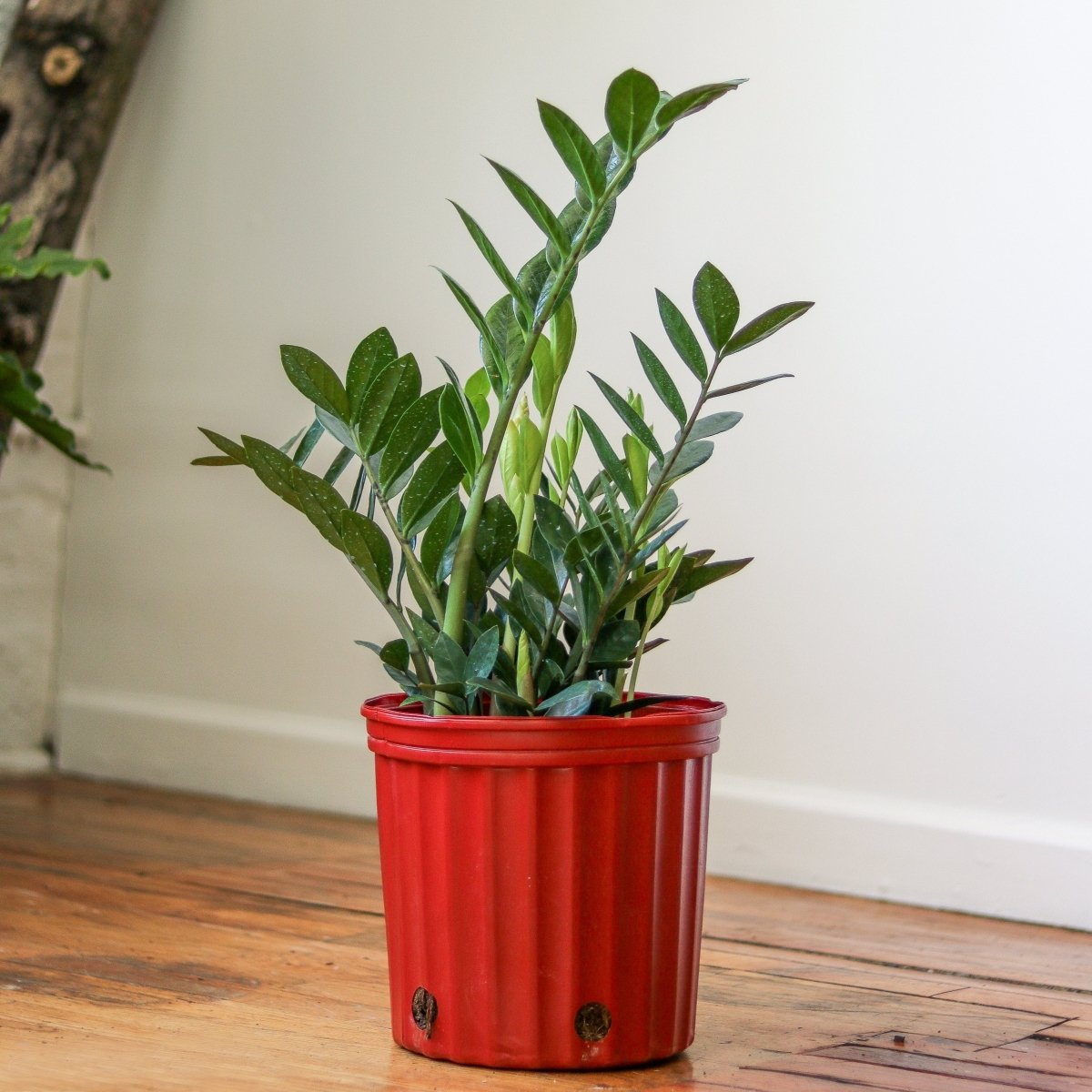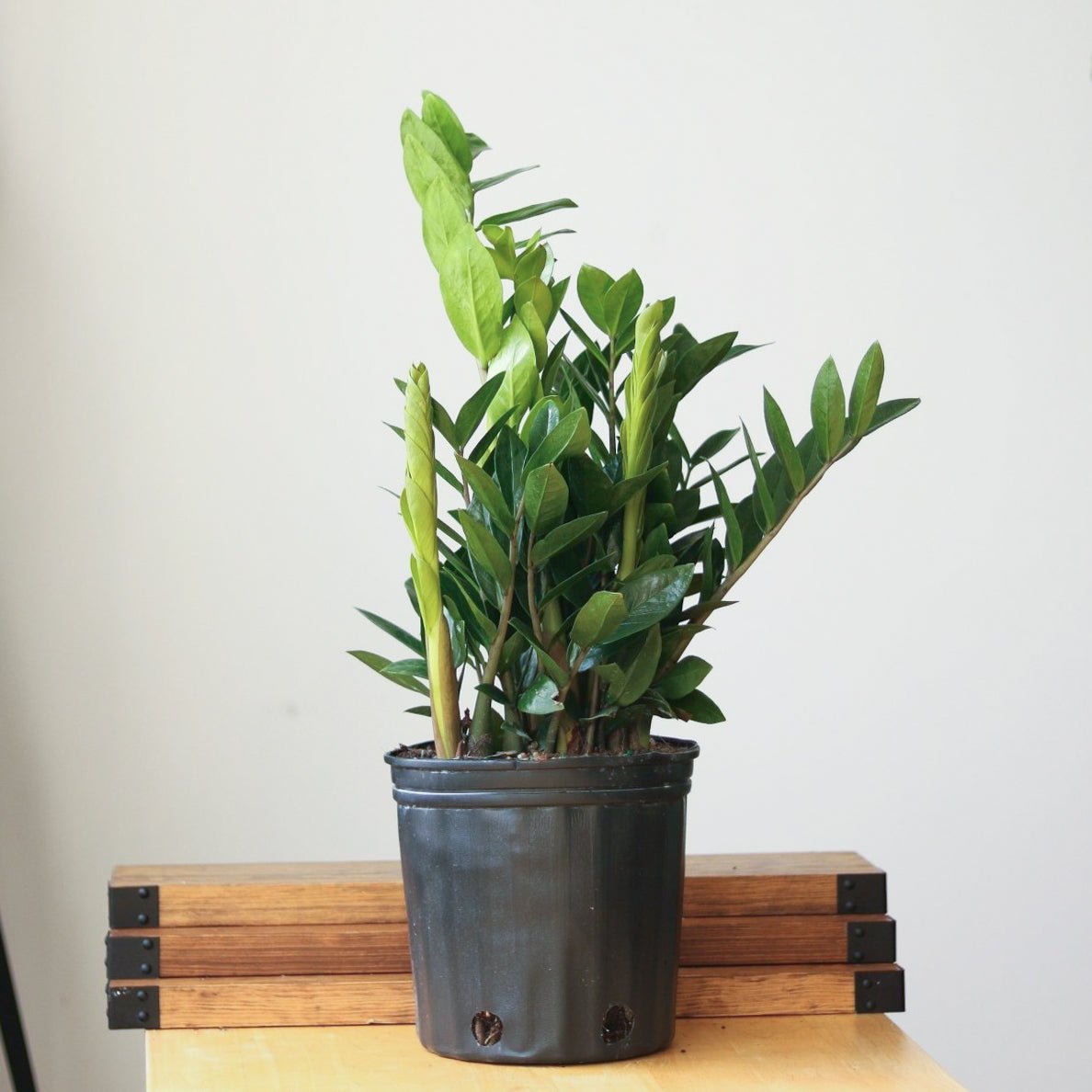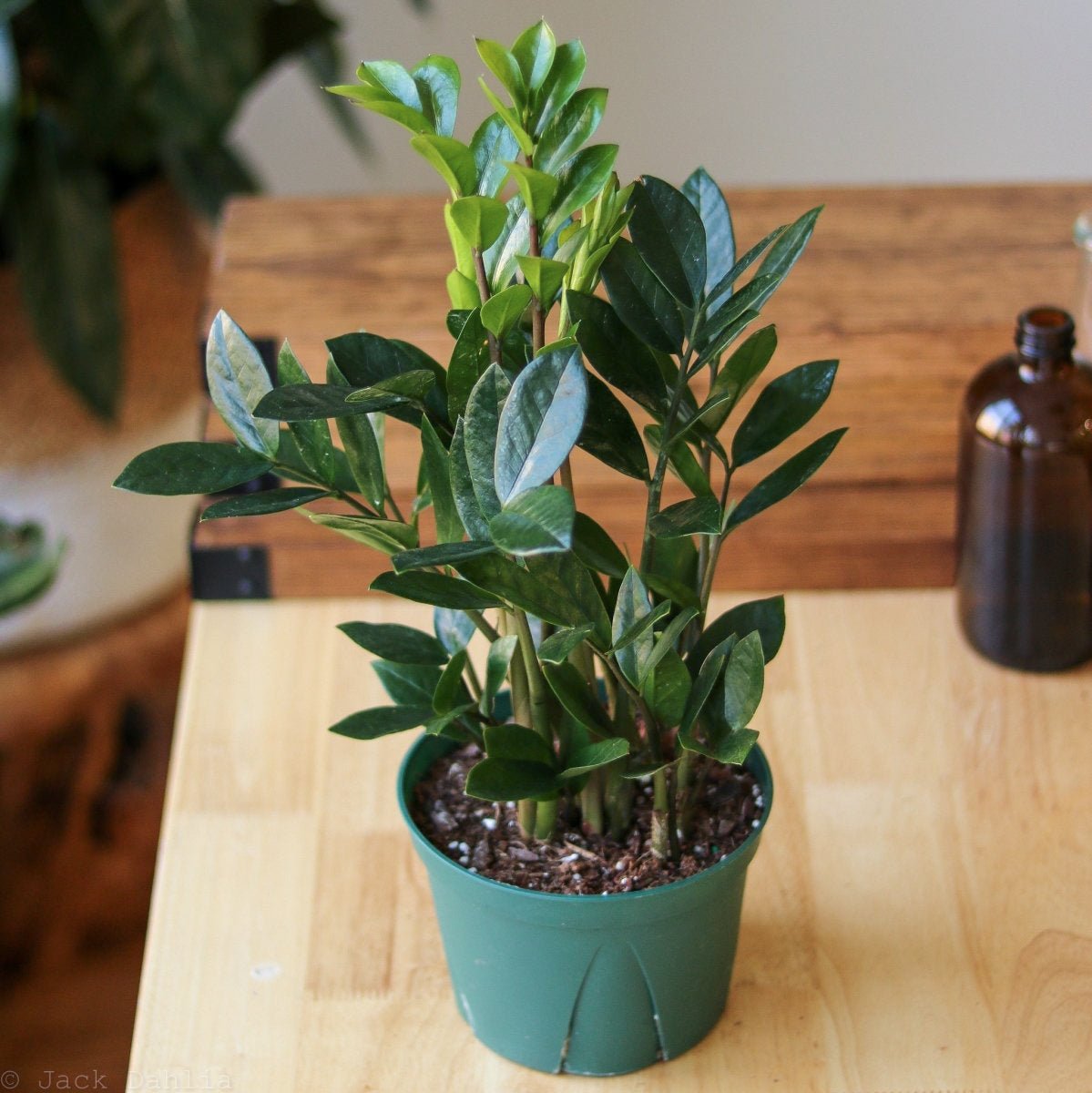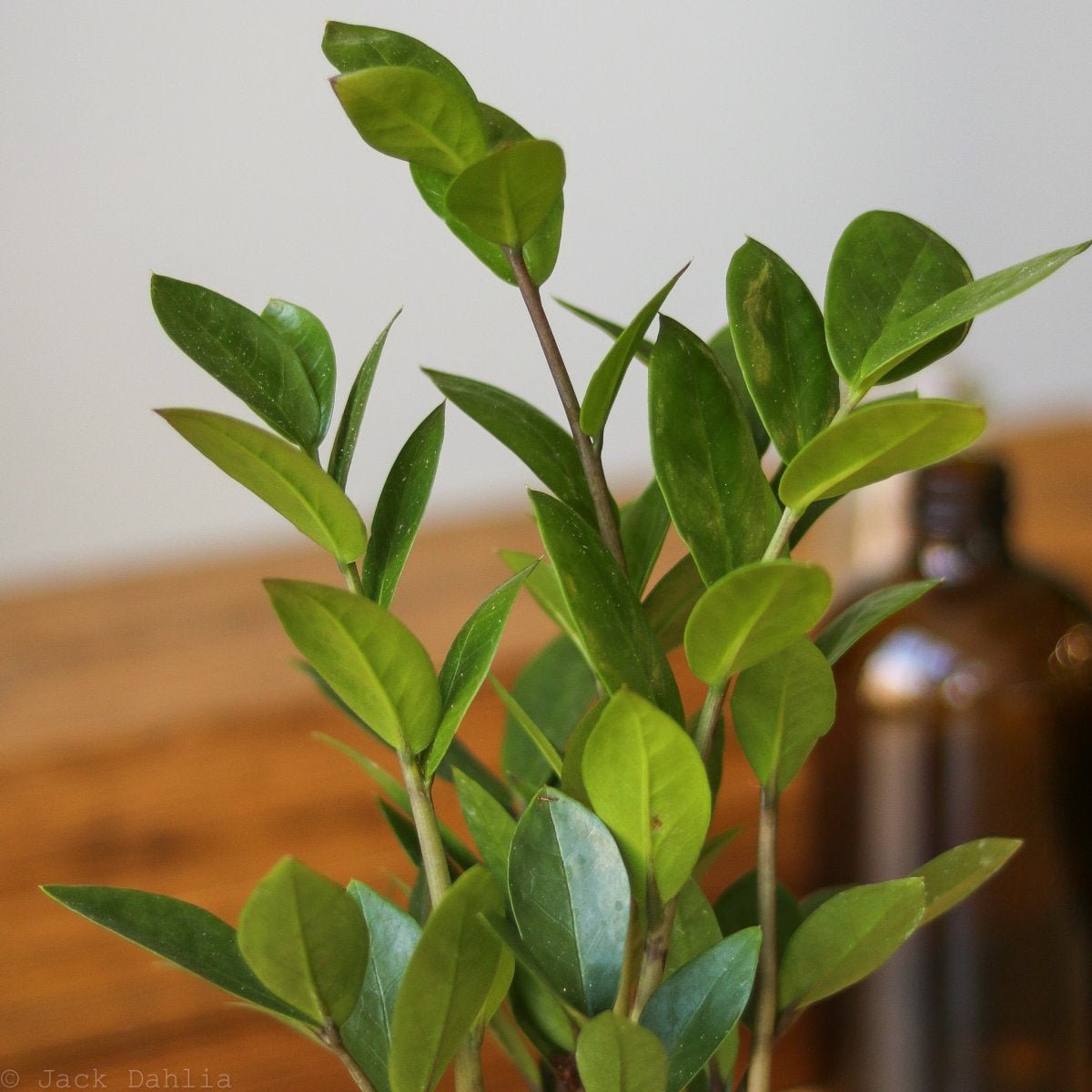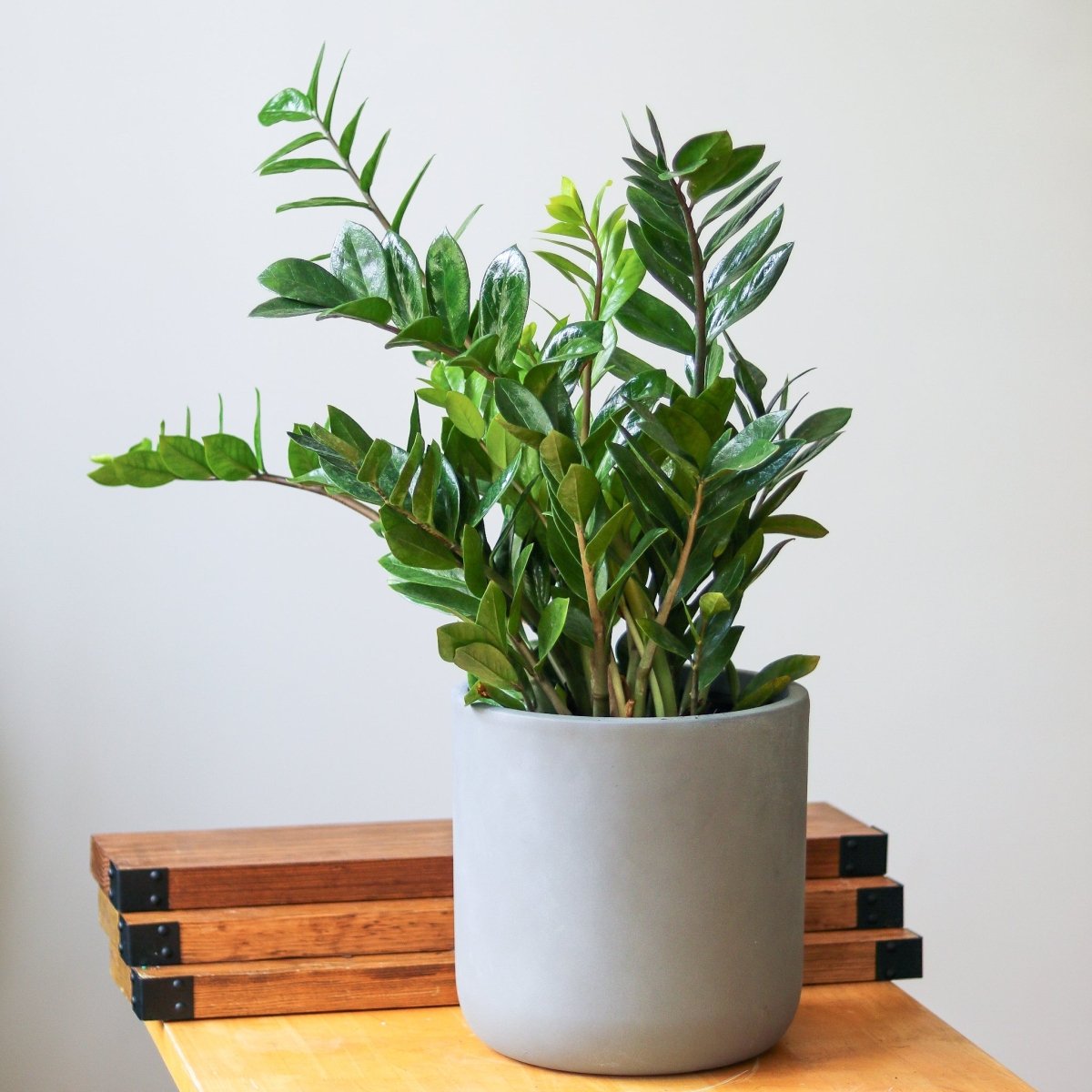Zamioculcas zamiifolia - Large ZZ Floor Plant
Zamioculcas zamiifolia - Large ZZ Floor Plant - 10" Nursery Pot is backordered and will ship as soon as it is back in stock.
Couldn't load pickup availability
Description
Description
Known for thriving on neglect, Zamioculcas zamiifolia, commonly known as the ZZ Plant, stands out as one of the most popular houseplants on the market today. It is characterized by its thick, glossy green leaves and upright stems. ZZ Plants are virtually indestructible, growing from large rhizomes that resemble potatoes. These rhizomes efficiently store water, allowing the plant to tolerate periods of drought.
Thriving in lower-light environments, the ZZ Plant is an excellent choice for the interior of your home. Some research studies have suggested that the ZZ plant can remove toxins from the air, although more research is needed to fully support this claim. Whether you're new to plants or searching for a thoughtful gift, the ZZ Plant should be at the top of your list due to its super easy-to-grow nature.
ZZ Plant Profile
- Botanical Name: Zamioculcas zamiifolia
- Common Name: Zanzibar gem, ZZ plant, Zuzu plant, aroid palm, eternity plant, or emerald palm
- Family: Araceae
- Native Range: Kenya, KwaZulu-Natal, Malawi, Mozambique, Tanzania, Zimbabwe
ZZ Plant Care Guide
- Care Level: Easy
- Light: Low-light tolerant. Prefers medium or bright indirect light.
- Water: The ZZ plant's root system stores water very efficiently which is why they are so drought tolerant, Avoid over-watering (#1 killer of ZZ plant) and allow the soil to dry out completely between waterings.
- Soil: Use a well-draining potting mix.
- Humidity: Low to Medium. The ZZ doesn’t require any extra humidity.
- Temperature: 60-75F
- Pruning: Prune as needed to remove brown or dead leaves and control growth.
- Feeding: Apply a balanced liquid houseplant fertilizer (20-20-20) once a month and reduce frequency in winter.
- Propagation: Division, Rhizomes, Leaf Cuttings
- Growth: Upright
- Pests: Look out for Aphids
- Toxicity: Toxic to humans and pets
➡️Learn how to grow ZZ Plants like a master with our ZZ Plant Care Guide. Our guide is full of advanced tips and tricks from the growing pros!
Keep Your Plants Cozy with Heat Packs
Frequently Asked Questions
Shipping
How do you ship your plants?
How do you ship your plants?
We carefully package each plant with love by hand right from our shop in Brooklyn. Extra steps are taken to ensure that every leaf arrives in pristine shape by using polyfill and encapsulating the plant in a protective paper sleeve. The soil is also hydrated before shipping so that the plant has plenty of water for it's travel to your doorstep. We offer several shipping speeds, so please choose the one that you feel comfortable with depending on your location.
Will my plant look like the one on the website?
Will my plant look like the one on the website?
Awesome question, we're glad you asked. Given the nature of our plant shop, we're constantly moving plants in and out of the shop, making it difficult and borderline impossible to keep an exact picture of each plant. In addition to the constantly rotating crop, we often grow in batches of 6, 12, or sometimes more! With this quantity we are unable to take a photo of each and every plant. The photos that we attach to each product listing is going to be of a plant that represents the average size and fullness of that set of plants. Some may be slightly larger or smaller, but in general, similar.
Do you include heat packs with your plants?
Do you include heat packs with your plants?
We offer Heat Packs for sale separately from the plants in 40, 60 and 72 hour increments. Please add a heat pack or two to your order if you live in an area where your order may be affected during transit by cold temperatures. We are not responsible for orders that are placed and damage is incurred to the plant if a heat pack is not purchased.
Which heat pack should I choose?
Which heat pack should I choose?
Heat packs come in three different increments, so please choose the appropriate hour increment depending on the speed of shipping that you choose during checkout. For example, if you choose a cheaper shipping option that will take longer, please select the 72 hour heat pack. If you've chosen a shorter method of shipping, the 40 or 60 hour increment would work! We like to encourage our customers to always get more than you need, just to be on the safe side!
How long will it take to receive my order?
How long will it take to receive my order?
Standard shipping normally takes 3-5 days. Next day shipping is available on all domestic orders (for an additional charge). International shipping times depend on the products and destination (estimated at checkout).
Do you offer express shipping?
Do you offer express shipping?
All orders are shipped 5-8 business days from the date it is placed. Please note that as a small plant shop, we do everything in our power to get orders out as fast as we can in the order that they come in. If you have circumstances that require expedited fulfillment, please connect with you and we can potentially offer options.
What countries do you ship to?
What countries do you ship to?
We ship our selection of rare, healthy, and unique houseplants all across the United States including California. At this time, due to customs and agricultural limitations, we are unable to ship plants internationally from the United States.
Returns and Refunds
How do I return a product?
How do I return a product?
Items must be returned within 30 days after receiving your order. Items must be returned in the same condition in which they were received, be unworn/unused, have any tags still attached, and include all the original packaging.
How long will it take to receive my refund?
How long will it take to receive my refund?
Refunds are processed within 7 days from when we receive the item(s).
What should I do if my plant arrives in poor shape?
What should I do if my plant arrives in poor shape?
In the extremely unlikely event that your plant arrives in less than perfect condition, you're covered by our 15-day plant health guarantee. Simply snap a photo of your plant and send it over to us. We'll happily take a peek and offer suggestions on how to perk it back up, offer a store credit, or send a replacement. We like to make it as easy as possible!
Can I return or exchange a plant?
Can I return or exchange a plant?
At this time, we do not accept returns on plants. In extreme circumstances where a return of a plant is necessary, the customer is responsible for the return shipping and a refund will only be issued if the plant arrives back to us in living condition.

